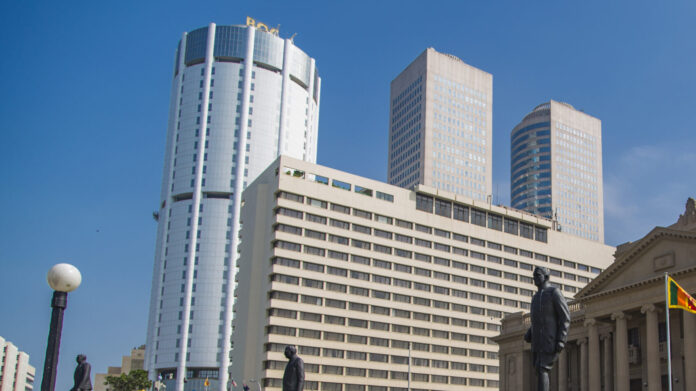Frontpage Journal | Economic Updates
The Central Bank of Sri Lanka, in its latest monetary policy review issued on July 23, 2025, has decided to maintain the Standing Deposit Facility Rate (SDFR) at 6.75 percent and the Standing Lending Facility Rate (SLFR) at 7.75 percent. This decision reflects a cautious but steady hand as the country continues to emerge from a historic economic crisis and shift towards a path of macroeconomic stabilization.
The policy stance comes at a time when inflation remains subdued, growth shows signs of resilience, and external buffers continue to strengthen. Headline inflation, as measured by the Colombo Consumer Price Index, was recorded at -0.6 percent in June 2025. The Central Bank anticipates that inflation will turn positive in the third quarter and gradually reach its medium-term target of around 5 percent. This disinflationary trend is consistent with the monetary tightening pursued over the past two years, as well as a contraction in global food and commodity prices.
On the growth front, real GDP expanded by 4.8 percent in the first quarter of 2025 compared to the previous year. This rebound is largely driven by improvements in private sector activity, a gradual recovery in domestic demand, and a normalization of production and services following the lifting of restrictions. Private sector credit has also picked up, indicating increased business confidence and better liquidity in the financial system. The Central Bank noted that lending interest rates have continued to decline, supported by earlier monetary policy easing and improved market conditions.
Externally, Sri Lanka’s balance of payments position has shown marked improvement. The recent receipt of the fifth tranche under the IMF’s Extended Fund Facility in early July, along with robust tourism inflows, rising remittances, and consistent foreign exchange purchases by the Central Bank, have helped strengthen gross official reserves. The rupee has remained relatively stable, with the exchange rate reflecting improved confidence in the domestic economy and external sector management.
Despite these encouraging developments, the Central Bank remains cautious about emerging risks. Global uncertainties such as elevated commodity prices, tightening monetary policy in advanced economies, and geopolitical tensions continue to pose threats to inflation and growth. Domestically, potential fiscal slippages, delays in structural reforms, or unanticipated demand-side pressures could also undermine the disinflation process. The Central Bank emphasized that it stands ready to recalibrate its policy stance if there are signs of deviation from the intended inflation path or risks to macroeconomic stability.
The decision to hold rates follows a surprise 25 basis point cut in May, when the Central Bank signaled its intention to support growth while inflation remained under control. That move was met with both optimism and caution from markets, given the narrow space for stimulus amid the IMF program’s fiscal consolidation requirements. By keeping rates unchanged now, the Central Bank sends a signal of policy continuity and prudence, reaffirming its dual objective of achieving price stability and facilitating economic recovery.
In the broader context, the July policy announcement reaffirms the Central Bank’s intention to move towards an inflation-targeting monetary framework, supported by exchange rate flexibility and stronger institutional independence. The clarity and consistency in its communication, particularly regarding inflation expectations and monetary transmission—are critical to anchoring investor confidence and ensuring credibility in the reform process.
As Sri Lanka works to regain footing after a period of severe economic stress, including sovereign default and rapid currency depreciation, the stability of the financial and monetary system will be a key pillar for sustainable growth. The decision to pause further rate changes reflects not only a short-term tactical choice but also a longer-term strategic positioning. It indicates that while the country has not yet emerged entirely from its vulnerabilities, it is firmly stepping onto a more stable economic trajectory.




